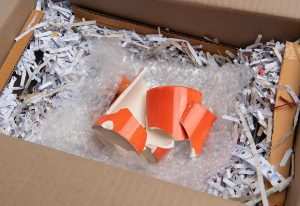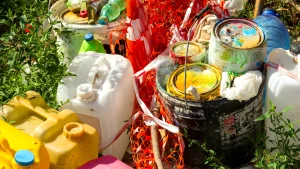Moving house is often a stressful experience, especially when it involves transporting valuable antiques and fragile items. These treasures, whether they hold monetary or sentimental value, require careful attention to ensure they reach their new home without damage.
The risks associated with moving such items are significant, as even minor mishandling can result in irreparable harm.
In this blog, we will explore essential tips and techniques for safeguarding your antiques and delicate belongings during a move.
By following these guidelines, you can significantly reduce the chances of damage and enjoy peace of mind knowing your precious items are well-protected.
Assessing the Fragility and Value
The first step in ensuring the safety of your antiques and fragile items is to assess their fragility and value. Understanding the specific needs of each item will help you determine the level of care required.
For instance, a delicate porcelain vase may need a different approach than a sturdy wooden antique. Identifying which items are most at risk allows you to prioritise them during the packing process.
In some cases, you may decide that certain high-value or particularly fragile items would be better handled by professionals.
Specialists in antique removals often have the expertise and tools needed to move these items safely. This decision should be based on the item’s fragility, the complexity of its transport, and its overall value.
Proper Packing Materials
Using the right packing materials is crucial for protecting your fragile items. Bubble wrap, foam, and custom-sized boxes are essential tools in this process.
Bubble wrap provides a cushion that absorbs shocks, while foam offers additional protection by filling gaps and preventing movement within the box.
Custom boxes, designed to fit the dimensions of your items, can further reduce the risk of damage during transit.
It’s also wise to consider double-boxing particularly fragile or valuable items. This involves placing the item in a smaller box that is then packed inside a larger box with additional padding.
This method adds an extra layer of protection, reducing the likelihood of damage from external impacts during the move.
Packing Techniques
When it comes to packing, the technique is as important as the materials used. Begin by wrapping each item individually, ensuring that all surfaces are adequately covered.
Fragile items should be cushioned with layers of bubble wrap or foam, and any gaps within the box should be filled with packing peanuts or crumpled paper to prevent movement during transit.
For items with irregular shapes, such as sculptures or antique lamps, it’s essential to take extra care.
These items should be packed in boxes that match their contours as closely as possible. Reinforce the box with additional padding and tape to ensure it remains secure throughout the move.
Labelling and Handling
Clear labelling is vital when moving fragile items. Each box containing delicate items should be labelled with “Fragile” in bold, easily visible text. Additionally, include specific handling instructions, such as “This Side Up” or “Handle with Care.”
This ensures that anyone involved in the move is aware of the contents and can take the necessary precautions.
Providing your removal team with clear instructions on handling fragile items is equally important.
Take the time to explain which boxes require special attention and how they should be transported. If possible, supervise the loading process to ensure that your instructions are followed.
Transportation Considerations
The method of transportation can greatly impact the safety of your fragile items. Choosing the right vehicle is crucial; a well-maintained van with good suspension will help minimise the impact of bumps and vibrations during the journey.
Additionally, it’s important to consider how items are loaded and secured within the vehicle.
Specialised removal companies may offer vehicles equipped with air-ride suspension and climate control, which can be particularly beneficial for transporting sensitive antiques.
Ensuring that all items are securely fastened and padded within the vehicle will further protect them from damage.
Insurance and Documentation
Even with the best precautions, accidents can happen, which is why insurance is a must when moving valuable items. Make sure your antiques and fragile belongings are fully insured before the move.
This insurance should cover the full replacement value of the items in case of damage or loss.
Documenting the condition of your items before the move is also crucial. Take detailed photographs of each item, noting any existing imperfections.
This documentation will be invaluable if you need to make an insurance claim, as it provides clear evidence of the item’s condition before the move.
Conclusion
Moving antiques and fragile items requires careful planning and execution.
By assessing the fragility and value of your belongings, using proper packing materials and techniques, and ensuring clear labelling and careful handling, you can significantly reduce the risks associated with the move.
Considering specialised transportation and securing adequate insurance will provide additional peace of mind, allowing you to focus on settling into your new home without worry.











